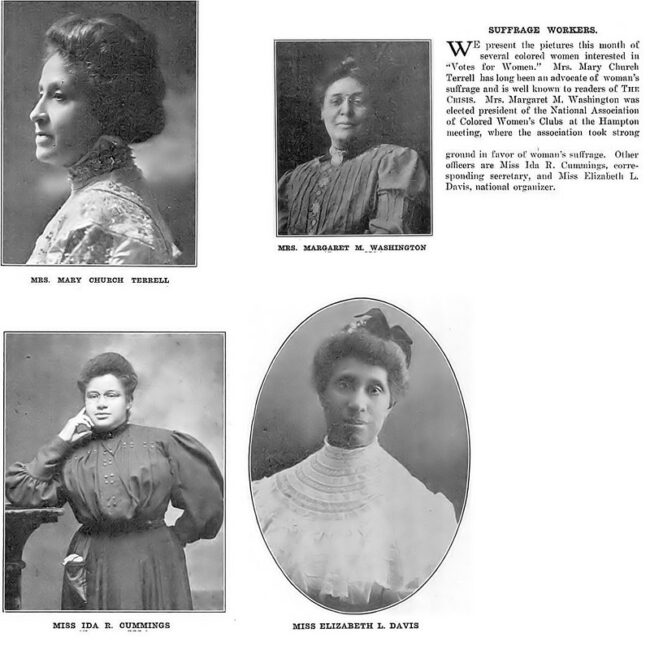

Writing for Courier Newsroom, The Burton Wire‘s founder & editor-in-chief Nsenga K. Burton, Ph.D. discusses the importance of writing the work of Black Women Suffragists into the dominant narrative of Women’s Suffrage as we celebrate the centennial of passage of the 19th Amendment, which gave women the right to vote. Check out an excerpt below:
EXCERPT
When Americans discuss the women’s suffrage movement in the United States, Susan B. Anthony, Alice Paul, Betsy Ross, and Elizabeth Cady Stanton are the names you often hear associated with the work to pass the 19th Amendment. On Aug. 18, 1920—exactly 100 years ago on Tuesday—the amendment was ratified by the final state needed, and women won the constitutional right to vote.
But it would be a full 45 years following passage of the 19th Amendment—when the 1965 Voting Rights Act was enacted—before Black women (and men) would be able to exercise their right to vote fully.
Due to the imposition of poll taxes and literacy tests in the Jim Crow South—not to mention the racial terror in the form of mob violence and mass murder experienced by Blacks attempting to vote in the South and throughout other pockets of the United States—Black women were often unable to participate in the electoral process. The passage of the 19th Amendment meant little for them.
Celebrated white women suffragists like Stanton and Ross and other high-profile leaders in the movement didn’t support the 14th and 15th amendments, which granted former slaves citizenship rights and gave Black men voting rights, respectively. So, unsurprisingly, helping Black women—many of whom were former slaves—gain the right to vote was not on these women’s agenda.
Thus, when people speak of the women’s suffrage movement, they speak of a middle to upper-class white women’s movement that disregarded Black women and left them disenfranchised following passage of the 19th Amendment.
No wonder the activism and struggle of Black women suffragists to obtain the right to vote are often left out of the dominant narrative.
The names of Black women suffragists like Mary Church Terrell, Harriet Forten Purvis, Anna Julia Cooper, Frances Ellen Watkins, and Mary Ann Shadd Cary are often excluded from the history books and dialogue of the women’s suffrage movements. Part of the reasoning for doing so was plain old white supremacy, but some of it was strategy. The presence of Black women made it difficult for Northern white women to collaborate with Southern white women, who refused to work in the same organizations as Black women.

When the 19th Amendment was ratified, more than a dozen states had already given women the right to vote, so millions of white women were already participating in elections. In those states, many Black women were still unable to vote because of the hurdles put in place by state legislatures targeting Black Americans in general. When Terrell, who helped found the National Association of Colored Women, appealed to white women suffragists for help, the response she and others received was that the disenfranchisement of Black women voters was a race problem, not a gender problem.
But Black women were organizing around the issue of voting rights long before their white counterparts: They worked closely with Black men to help them obtain that right through the 15th Amendment in 1870. They founded their own clubs and organizations to fight for the rights of Black women, including suffrage, and continued working well into the next century.
In 1913, for example, journalist, anti-lynching activist, and longtime women’s rights activist Ida B. Wells founded the Alpha Suffrage Club, the first suffrage organization for Black women in Chicago. Black women worked diligently for universal women’s suffrage just as they had worked for citizenship and for Black men to have the right to vote. They knew full well they would continue to be disenfranchised and subjugated by both groups, but had the vision to understand that universal equality would eventually mean Black women’s equality.
END of EXCERPT.
Read the entire post at Currier Newsroom.
Follow The Burton Wire on Instagram or Twitter @TheBurtonWire.








